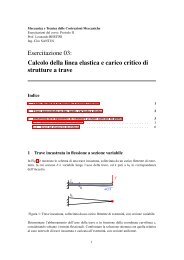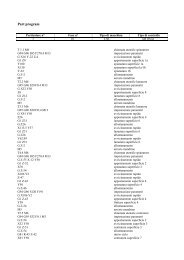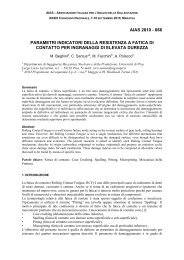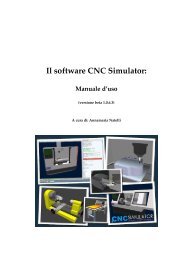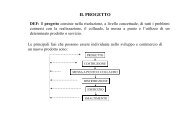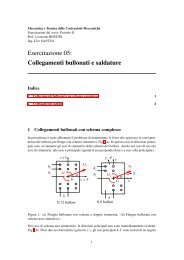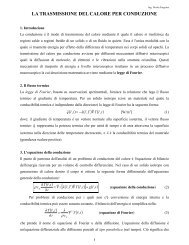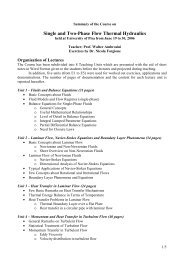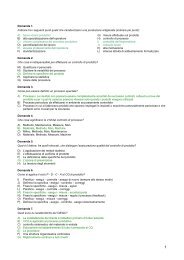Risk Assessment, Uncertainty, Limbo Dancing, and ALARP
Risk Assessment, Uncertainty, Limbo Dancing, and ALARP
Risk Assessment, Uncertainty, Limbo Dancing, and ALARP
You also want an ePaper? Increase the reach of your titles
YUMPU automatically turns print PDFs into web optimized ePapers that Google loves.
<strong>Risk</strong> <strong>Assessment</strong>, <strong>Limbo</strong><br />
<strong>Dancing</strong>, <strong>and</strong> <strong>ALARP</strong><br />
Les Shirvill
Safety <strong>and</strong> <strong>Risk</strong><br />
Safety = Freedom from intolerable risk<br />
<strong>Risk</strong> = Consequence of an undesirable event<br />
x Likelihood of the event happening<br />
<strong>Risk</strong> without benefit is unacceptable.
Tolerable v Acceptable<br />
Tolerability does not mean acceptability!<br />
Tolerability refers to a willingness to live with<br />
a risk to secure certain benefits <strong>and</strong> with<br />
the confidence that it is being properly<br />
controlled.<br />
To tolerate a risk means the we do not regard<br />
it as negligible or something we can ignore,<br />
but rather something we keep under<br />
review <strong>and</strong> reduce further if <strong>and</strong> when<br />
we can.
Managing Hydrogen Safety<br />
Managing hydrogen hazards <strong>and</strong> risks is a<br />
challenge!<br />
Not because hydrogen is inherently more<br />
hazardous than conventional fuels – although<br />
the hazards <strong>and</strong> consequences may be<br />
different,<br />
but a challenge because this is an emerging<br />
technology <strong>and</strong> thus we don’t have historical<br />
data on which to base our assessments of<br />
the risks.
<strong>Risk</strong> Management<br />
• Identify the hazards<br />
• Where possible eliminate the hazards<br />
• Assess the residual risks<br />
• Manage the residual risks<br />
The risk assessment may be qualitative<br />
(RAM) or quantitative (QRA) as appropriate.
RAM (<strong>Risk</strong> <strong>Assessment</strong> Matrix)<br />
Severity<br />
People<br />
Assets<br />
0<br />
1<br />
2<br />
3<br />
4<br />
5<br />
Consequences<br />
Environment<br />
Reputation<br />
No injury or<br />
health<br />
effect<br />
No<br />
damage<br />
No effect<br />
No<br />
impact<br />
Slight injury<br />
Slight<br />
Slight<br />
Slight<br />
or health<br />
damage<br />
effect<br />
impact<br />
effect<br />
Minor injury<br />
Minor<br />
Minor<br />
Minor<br />
or health<br />
damage<br />
effect<br />
impact<br />
effect<br />
Major injury<br />
or health<br />
effect<br />
Moderate<br />
damage<br />
Moderate<br />
effect<br />
Moderate<br />
impact<br />
PTD or up<br />
Major<br />
Major<br />
Major<br />
to 3<br />
damage<br />
effect<br />
impact<br />
fatalities<br />
More than<br />
Massive<br />
Massive<br />
Massive<br />
3 fatalities<br />
damage<br />
effect<br />
impact<br />
Increasing likelihood<br />
A<br />
B<br />
C<br />
D<br />
Never<br />
heard of in<br />
the Industry<br />
Heard of in<br />
the Industry<br />
Has<br />
happened in<br />
the<br />
Organisation<br />
or more than<br />
once per<br />
year in the<br />
Industry<br />
Has<br />
happened at<br />
the Location<br />
or more than<br />
once per<br />
year in the<br />
Organisation<br />
E<br />
Has<br />
happened<br />
more than<br />
once per<br />
year at the<br />
Location
QRA (Quantitative <strong>Risk</strong> <strong>Assessment</strong>)<br />
<strong>Risk</strong> = Consequence of an undesirable event x<br />
Likelihood of the event happening<br />
Consequence of an event – usually from modelling<br />
Likelihood of the event – failure/leak frequencies,<br />
ignition probabilities ...<br />
Lack of failure data specific to hydrogen means<br />
reliance on generic data derived from the oil <strong>and</strong><br />
gas industries. Hydrogen systems typically have<br />
small-bore piping, connected by mechanical<br />
fittings; whereas industry data is dominated by<br />
larger pipes, flanged fittings, <strong>and</strong> often in corrosive<br />
service.
<strong>Limbo</strong> <strong>Dancing</strong>
<strong>Limbo</strong> <strong>Dancing</strong><br />
Set the bar (tolerance criteria) first <strong>and</strong> then<br />
quantify the risks (QRA).<br />
If the quantified risks don’t get you below the<br />
bar, don’t bend over backwards (fiddle the<br />
inputs to the QRA) to get beneath the bar!<br />
That’s <strong>Limbo</strong> <strong>Dancing</strong>!
<strong>ALARP</strong> (As low as reasonably<br />
practicable)<br />
<strong>ALARP</strong> assumes that there is a balance<br />
between risk <strong>and</strong> benefit – <strong>Risk</strong> without<br />
benefit is unacceptable.<br />
<strong>ALARP</strong> is taking measures to progressively<br />
reduce risk until the cost of any further risk<br />
reduction is grossly disproportionate to the<br />
risk reduction thereby obtained.
<strong>ALARP</strong><br />
On the 14 th June 2007 the European Court of<br />
Justice held in Commission v UK C-127/05 that<br />
the UK’s use of the expression “so far as is<br />
reasonably practicable”, where it appears in<br />
UK Health <strong>and</strong> Safety Law, was not<br />
inconsistent with the UK’s obligations under<br />
the Framework Directive 89/331.




